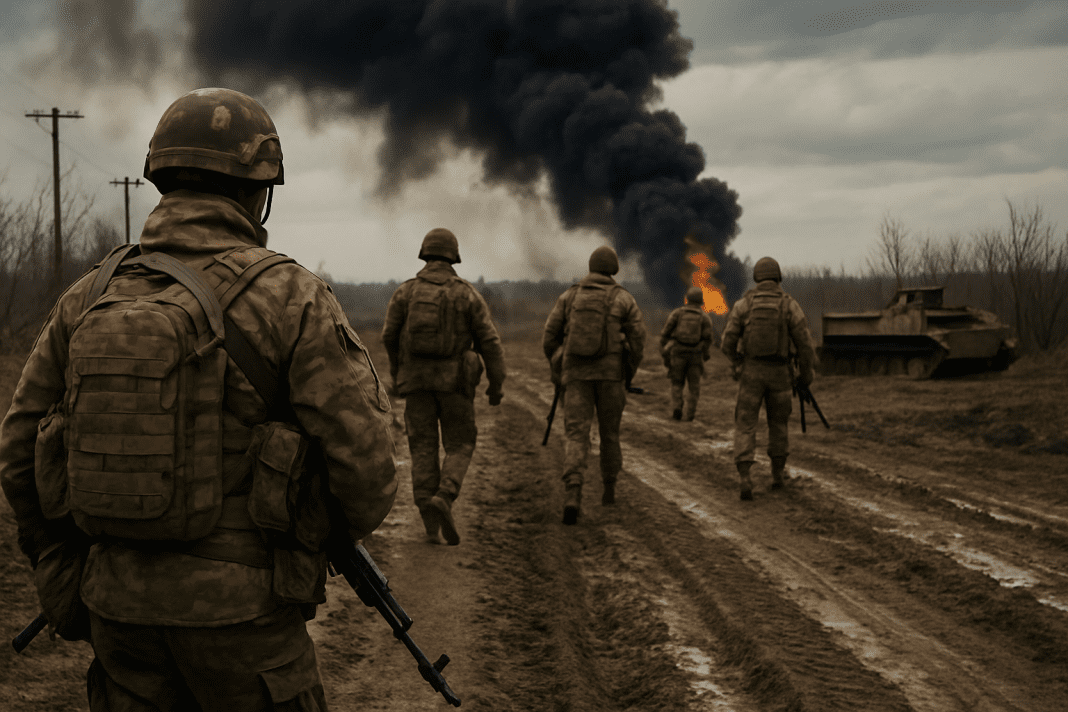The war between Russia and Ukraine has dragged on for over four years now. Explosions, drone strikes, and military operations have become daily headlines, with no real signs of peace.
🇷🇺 Time to Declare Victory? Why Russia Should Consider Ending the Ukraine War
Russia has made significant territorial gains and currently holds most of the land it aimed to capture. But behind the battlefield victories lies a larger strategic problem: continuing this war may end up weakening Russia more than helping it.
President Vladimir Putin and his top advisers still speak in the language of total victory. They talk about pushing forward until all objectives are met, even if it takes decades. But here’s the irony—Russia has already achieved most of its original goals. Keeping the war going now may do more harm than good to Russia’s long-term power and global standing.
🔍 What Russia Wanted—and What It’s Already Achieved
When the invasion began, Russia’s goals were clear: keep Ukraine out of NATO, gain control over five key regions, limit Ukraine’s military power, and force political change in Kyiv. Let’s break these down in simple terms:
- No NATO for Ukraine: This is essentially achieved. Ukraine is nowhere close to joining the alliance. Most NATO countries are hesitant to admit Ukraine because they don’t want to risk a direct war with Russia. So, Russia has managed to keep NATO at bay.
- Territorial Gains: Russia now controls about 85% of the land it annexed, including Crimea and key parts of eastern and southern Ukraine. Ukraine may not legally recognize this, but in reality, these territories are now under Russian control. Ukraine’s military has accepted that it cannot win them back by force.
- Demilitarization and Regime Change: While Ukraine still has a functioning military, it’s heavily dependent on Western support. Future negotiations could lead to limits on its weapons and army size. Also, new elections in Ukraine after a ceasefire could bring in a more neutral government—meeting Russia’s desire for political change without direct interference.
- Protection of Ethnic Russians: Russia already controls regions with large Russian-speaking populations. And if Ukraine continues to pursue EU membership, it will have to guarantee minority rights under European law.
In short, Russia is in a position to claim a “strategic win” if it wants to. But continuing to fight for complete domination will come at a high cost.
🧨 The Hidden Costs of a Long War
Despite battlefield gains, the war has drained Russia’s economy and military. Over a million Russian soldiers have been killed or wounded. Massive amounts of tanks, jets, and other equipment have been destroyed. Russia now relies on countries like North Korea and Iran to resupply weapons. That’s not the mark of a superpower at the top of its game.
International sanctions remain severe. Although some may be lifted after a ceasefire, keeping the war going ensures those sanctions stay—and even grow. This is choking off Russia’s access to global markets and technologies.
Meanwhile, other world powers are getting stronger. Europe, once slow to act, is now increasing its military strength. India’s economy is growing fast and may soon leave Russia behind. China, while officially friendly, is slowly turning Russia into a junior partner. In fact, both the U.S. and China benefit from a prolonged war: America weakens a rival without fighting directly, and China gains influence over a dependent Russia.
The biggest danger? Russia is falling behind in key technologies like AI, cybersecurity, and green energy—all because it’s spending too much on war and too little on innovation. Without catching up, Russia may find itself isolated in the very multipolar world that Putin has long championed.
🔥 Russia’s war machine takes a hit as Ukrainian drones strike Nevinnomyssk chemical facility
🎯 The Smart Move: Declare Victory and Rebuild
Putin rose to power promising to restore Russia’s greatness. For two decades, he largely succeeded—growing the economy, rebuilding the military, and reasserting influence globally. But this war is now doing the opposite. It’s burning through resources, alienating allies, and weakening Russia’s global position.
Declaring victory now doesn’t mean admitting defeat. It means recognizing that most original goals are already met and shifting focus to the bigger game: preparing for future competition with the U.S., China, and Europe. That requires a strong economy, modern military, and technological edge—not endless fighting.
Russia can still shape the world order—but only if it stops the bleeding now. A smart strategist would take this partial victory, lock in the gains, and start building toward a stronger, more sustainable future.
The path to long-term power doesn’t run through Kyiv anymore. It runs through rebuilding at home, restoring global relationships, and focusing on the challenges that lie ahead.

